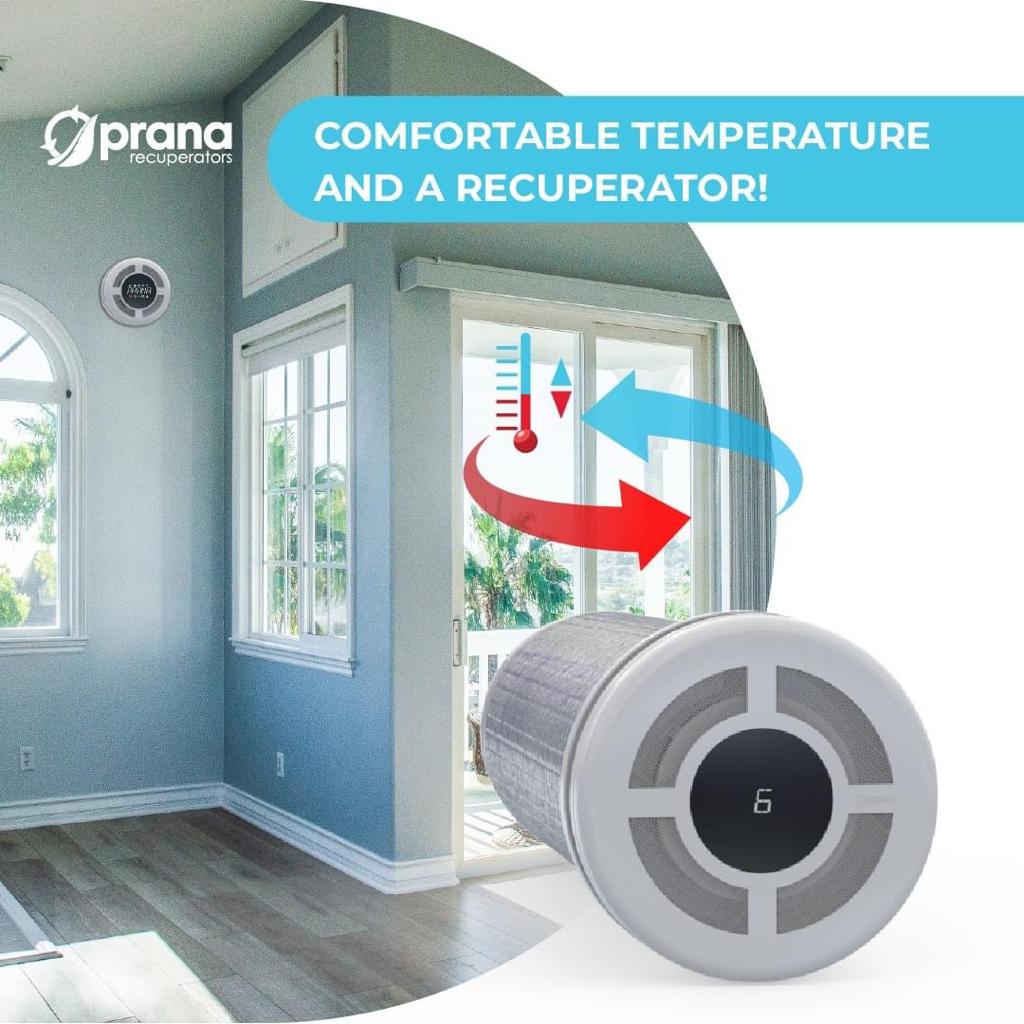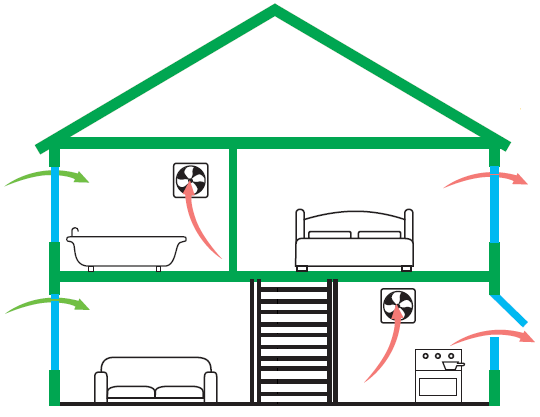Understanding the Significance of Home Ventilation for a Healthier Living Atmosphere
Home air flow plays a crucial role in keeping a healthy and balanced living environment. It helps with the exchange of exterior and interior air, which is essential for enhancing air top quality. Without proper air flow, homes can become breeding premises for allergens and contaminants. The effects of poor air circulation can be substantial. This raises the questions of exactly how homeowners can properly implement ventilation strategies to safeguard their health and wellness. Understanding these methods is crucial.

The Essentials of Home Air Flow
Home air flow functions as a crucial component of indoor air top quality and comfort. It includes the process of exchanging stagnant interior air with fresh exterior air, thus minimizing moisture and managing temperature. Proper air flow systems can include all-natural techniques, such as open home windows and vents, along with mechanical systems, such as exhaust followers and air exchangers. Reliable home ventilation helps protect against issues like indoor mold and mildew growth and the accumulation of damaging particles. It additionally boosts total power effectiveness, as well-ventilated rooms can keep comfortable temperature levels with less dependence on home heating and cooling systems. Understanding the basics of home ventilation is important for house owners seeking to produce a much healthier living atmosphere on their own and their families.

Usual Resources of Indoor Air Contamination

Many may not recognize it, indoor air contamination can originate from various resources within a house. Typical contributors consist of volatile organic compounds (VOCs) produced from paints, solvents, and cleansing products. House devices, such as gas stoves and fire places, can launch harmful gases like carbon monoxide and nitrogen dioxide. Furthermore, mold and mildew and mold prosper in damp areas, launching spores that influence air high quality. Pet dog dander, allergen, and pollen can collect indoors, additional intensifying air pollution degrees. Cigarette smoking inside your home produces hazardous chemicals that linger in the air. Developing materials, including asbestos and formaldehyde, can off-gas harmful materials. Recognizing these resources is important for maintaining a healthier interior atmosphere and promoting effective ventilation techniques.
Health And Wellness Results of Poor Air Flow
Indoor air pollution can have considerable wellness implications, specifically when air flow is poor. Poor ventilation can bring about the buildup of damaging toxins, such as unstable natural substances, mold and mildew, and particulate issue. This accumulation might result in breathing problems, consisting of bronchial asthma, allergies, and persistent obstructive lung illness. Individuals may experience signs and symptoms like migraines, tiredness, and irritability of the eyes, nose, and throat. Vulnerable populations, such as youngsters and the elderly, go to greater risk for extreme health results. Long-term exposure to badly ventilated environments can likewise contribute to a lot more serious problems, including cardiovascular diseases. Ensuring proper ventilation is vital for preserving a healthy living atmosphere and reducing the danger of wellness difficulties associated with indoor air contamination.
Efficient Air Flow Approaches for Your Home
Appropriate air flow is important for maintaining a healthy and balanced interior setting, and executing effective methods can greatly boost air high quality. House owners can start by guaranteeing that exhaust fans are set up in bathroom and kitchens to remove excess dampness and smells. Opening up windows on a regular basis enables fresh air to circulate, specifically throughout light weather. In addition, making use of air purifiers with HEPA filters can assist capture air-borne toxins. For homes with home heating and cooling down systems, maintaining cooling and heating systems and changing filters regularly is essential for peak performance. Integrating natural ventilation strategies, such as cross-ventilation, can additionally boost air movement. Securing any kind of leaks in doors and home windows prevents unwanted drafts, which can interrupt regulated air flow, eventually leading to enhanced indoor air quality and comfort.
Keeping Optimum Air Quality Year-Round
To maintain suitable air high quality year-round, homeowners have to embrace a positive strategy to managing their indoor environment. Frequently keeping an eye on interior air high quality is important; this consists of checking for contaminants such as dust, mold and mildew, and volatile organic compounds (VOCs) Carrying out effective air flow systems, such as exhaust fans and air cleansers, can significantly reduce airborne impurities. Furthermore, regular maintenance of a/c systems assurances peak performance and air flow. House owners must also consider humidity degrees, as too much wetness can result in mold growth. Seasonal modifications may demand adjustments in ventilation strategies to fit differing a fantastic read outdoor air high quality. By prioritizing these methods, homeowners can develop a healthier home, advertising overall health for all passengers throughout the year.
Often Asked Concerns
Exactly How Can I Inform if My Home Requirements Much Better Air Flow?
To determine if a home calls for far better air flow, one need to observe indications such as consistent humidity, mold growth, musty odors, condensation on home windows, or increased allergic reaction signs and symptoms, suggesting insufficient airflow and possibly bad indoor air quality.
What Are the Signs of Poor Indoor Air High Quality?

Can Houseplants Improve Indoor Air Quality Properly?
The efficiency of houseplants in enhancing indoor air high quality is debated. While some researches suggest they can soak up toxins and produce oxygen, their general influence may be very little compared to proper air flow and air filtering systems.
How Typically Should I Adjustment My Air Filters?
The frequency of air filter adjustments normally depends upon usage and filter type. Normally, it is recommended to replace filters every 3 months, though houses with allergies or pets may require more regular modifications for suitable performance.
Are There Any Type Of Specific Air Flow Systems for Allergic Reaction Sufferers?
Lots of air flow systems, such as HEPA-filtered systems, properly reduce allergens in the air. Home Ventilation Melbourne. These systems catch plant pollen, family pet, and dust dander, supplying allergic reaction sufferers with a YOURURL.com cleaner, much healthier interior setting while handling air top quality successfully
It helps with the exchange of indoor and exterior air, which is essential for boosting air quality. Home ventilation offers as an important part of interior air high quality and comfort. It involves the procedure of exchanging stale interior air with fresh outside air, consequently lowering moisture and regulating temperature level. Indoor air pollution can have considerable health effects, particularly when air flow is inadequate. Correct ventilation is crucial for maintaining a healthy indoor atmosphere, and implementing Recommended Reading efficient approaches can substantially improve air top quality.